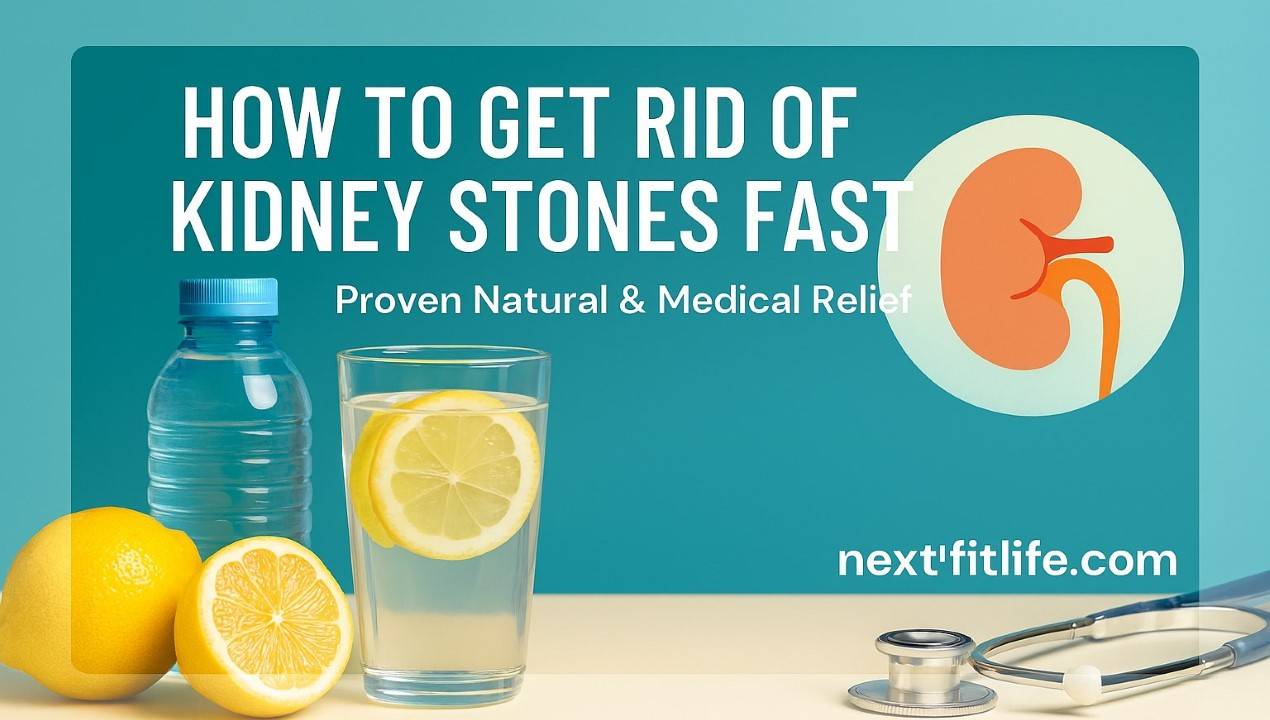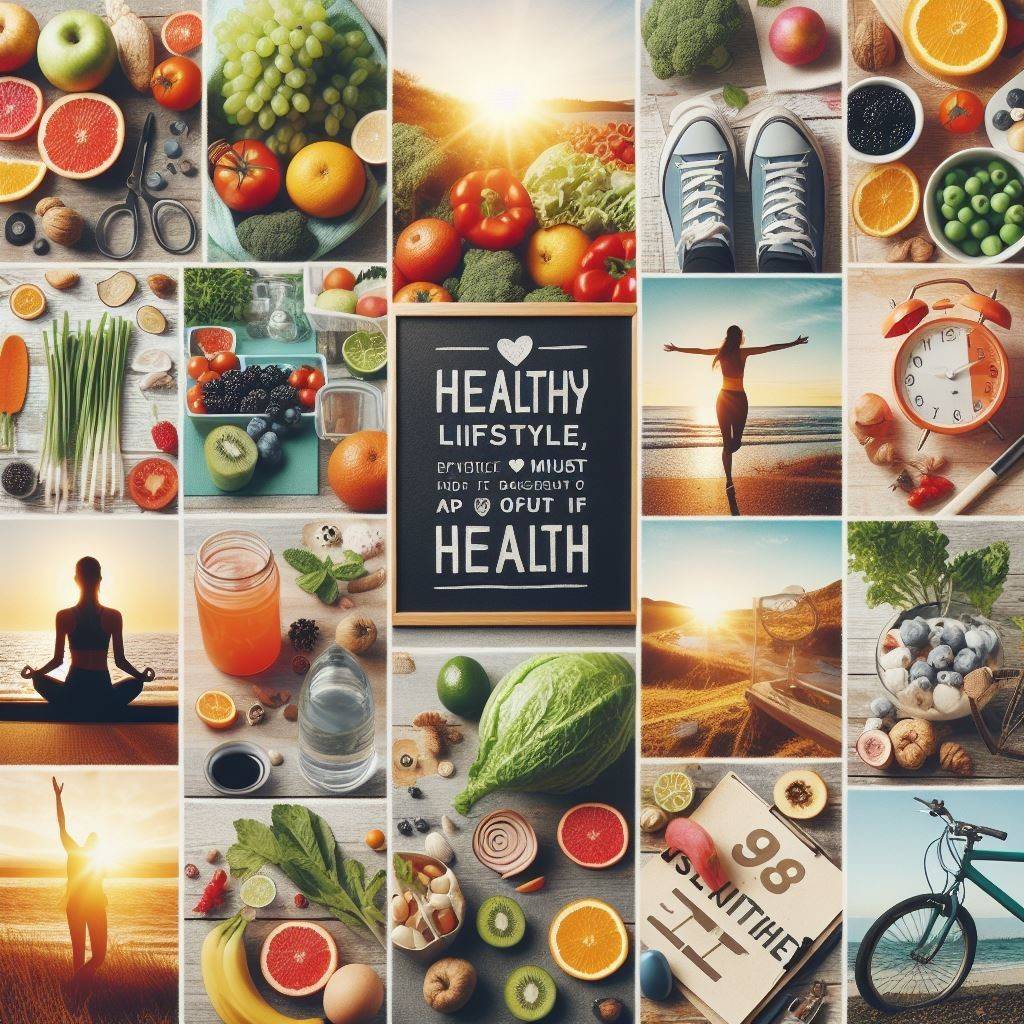Kidney stones are among the most painful experiences anyone can face. That sharp, stabbing pain in your back or lower abdomen can come on suddenly and make even simple tasks unbearable. The good news? Most kidney stones can be treated — and even prevented — with the right approach.
In this complete 2025 guide, you’ll learn how to get rid of kidney stones safely and naturally, when to see a doctor, what foods to eat, and how to stop them from coming back. Let us discuss it.
What Are Kidney Stones?
Kidney stones are hard mineral deposits that form inside your kidneys when substances like calcium, oxalate, and uric acid buildup in concentrated urine. When your body doesn’t have enough water to dilute these substances, they crystallize and stick together — forming stones that can range from tiny grains to painful, marble-sized masses.
Most stones form in the kidneys but can travel down your urinary tract (ureters, bladder, urethra), causing severe pain when passing through.
Types of Kidney Stones and Why They Matter
Not all kidney stones are the same — and knowing your type is key to proper treatment and prevention.
| Stone Type | Common Causes | Best Ways to Manage |
| Calcium Oxalate | High oxalate foods (spinach, nuts), dehydration | Drink more water, reduce oxalate, and increase citrate intake |
| Uric Acid | High animal protein diet, dehydration | Limit red meat, increase urine pH with citrus or meds |
| Struvite | Chronic urinary tract infections (UTIs) | Treat infection, and medical removal if large |
| Cystine | Genetic disorder (rare) | Long-term medication, hydration, and medical management |
Tip: If you’ve passed a stone before, ask your doctor for a stone analysis test — it reveals which minerals caused it, helping tailor your diet and treatment.
Common Symptoms of Kidney Stones
You may not notice a kidney stone until it starts moving through your urinary tract. Symptoms can include:
- Severe back or side pain (that comes in waves)
- Pain when urinating
- Blood in the urine (pink, red, or brown)
- Nausea and vomiting
- Frequent urge to urinate
- Cloudy or foul-smelling urine
See a doctor immediately if you experience fever, chills, or severe pain — these could mean infection or a stone that’s blocking urine flow.
Diagnosing Kidney Stones
Doctors typically diagnose kidney stones using:
- Imaging tests like ultrasound or CT scans
- urinalysis to check for crystals or infection
- Blood tests to measure minerals and kidney function
- Stone analysis after passing or removal
These tests help determine the stone’s size, location, and composition, which guide treatment choices.
How to Get Rid of Kidney Stones Naturally at Home
If your stones are small (less than 5mm), they may pass naturally with proper care. Let’s explore safe and effective natural methods proven to help dissolve and flush them out.
1- Drink Plenty of Water – Your #1 Defence
Hydration is key to how to get rid of kidney stones naturally. Water dilutes minerals in your urine, reducing stone formation and helping small stones pass faster.
Pro Tip: Aim for at least 2.5–3 liters (10–12 cups) daily. Keep your urine light yellow or clear — that means your kidneys are flushing efficiently.
2- Lemon Juice and Olive Oil Remedy
A simple yet effective natural trick. Mix ¼ cup of lemon juice with ¼ cup of olive oil and drink it, followed by a full glass of water.
- Lemon juice contains citric acid, which breaks down calcium-based stones.
- Olive oil helps lubricate your urinary tract for smoother passage.
Repeat once a day for a few days until the stone passes.
3-Apple Cider Vinegar Drink
Apple cider vinegar (ACV) contains acetic acid, known to help soften and dissolve kidney stones.
Mix 2 tablespoons of ACV with a glass of warm water. Drink once daily.
Avoid overuse — too much ACV may lower potassium levels.
4- Eat Water-Rich Fruits and Vegetables
Fruits like watermelon, cucumber, and oranges boost hydration and contain natural citrates that stop stones from forming.
Adding fiber-rich foods like oats and leafy greens also supports kidney detoxification.
5- Try Natural Diuretics and Herbal Teas
Certain herbs gently increase urine flow and ease stone passage:
- Basil leaf tea – helps balance uric acid levels.
- Dandelion root tea – supports detoxification.
- Nettle leaf tea – flushes bacteria and toxins.
Drink one cup daily to keep your urinary tract clear and healthy.
Medical Treatments for Kidney Stones
Sometimes, natural remedies alone aren’t enough — especially for large stones or severe pain. Let’s explore modern medical treatments available today for how to get rid of kidney stones safely and effectively.
1. Pain Management and Medication
- NSAIDs (like Ibuprofen) – reduce inflammation and pain.
- Alpha-blockers (Tamsulosin) – relax the ureter muscles to help stones pass more easily.
- Antibiotics – prescribed if an infection is present.
- Uric acid reducers (Allopurinol) – help prevent uric-acid-based stones.
Doctors often recommend combining medications with increased hydration to assist stone movement.
2. Extracorporeal Shock Wave Lithotripsy (ESWL)
A non-invasive and common treatment, ESWL uses focused shock waves to break kidney stones into tiny fragments that can be passed naturally through urine.
- Performed under local anesthesia
- Recovery time: 1–2 days
- Ideal for stones under 2 cm
3. Ureteroscopy (URS)
When stones get stuck in the ureter, doctors use a thin tube with a camera to locate and remove them.
- Minimally invasive
- Uses a laser to break stones
- No incisions needed
URS offers quick recovery and immediate stone removal, making it one of the most effective medical treatments.
4. Percutaneous Nephrolithotomy (PCNL)
For enormous stones that can’t be broken by other methods, PCNL is performed.
A small incision in the back gives direct access to the kidney for stone removal.
Though it sounds invasive, PCNL is highly effective for stones larger than 2 cm and prevents kidney damage from blockage.
5. Intravenous (IV) Fluid Therapy
If you’re dehydrated or in severe pain, doctors may provide IV fluids to help flush your kidneys faster.
This method also supports electrolyte balance during recovery.
How Long Does It Take to Pass a Kidney Stone?
This depends on stone size, shape, and location.
- Stones <4 mm may pass in 1–2 weeks
- Stones 4–6 mm may take 2–3 weeks
- Stones >6 mm often need medical help
To ease pain:
- Take prescribed pain relievers
- Use a warm compress on your side
- Keep moving — gentle walking helps stones travel faster
Kidney Stone Diet Plan: What to Eat and Avoid
A healthy diet is key for both recovery and prevention.
✅ Foods That Help
- Citrus fruits (lemon, orange, grapefruit)
- Water-rich fruits (melon, cucumber)
- Whole grains and leafy vegetables
- Low-fat dairy (if not sensitive)
❌ Foods to Limit
- Spinach, beets, rhubarb (high oxalate)
- Red meat and organ meats (high purine)
- Soda and processed salt
- Excessive vitamin C supplements
Sample One-Day Meal Plan:
- Breakfast: Oatmeal with banana & lemon water
- Lunch: Grilled chicken salad with cucumber & olive oil
- Snack: Watermelon slices
- Dinner: Steamed fish with brown rice and broccoli
How to Get Rid of Kidney Stones and Prevent Them from Coming Back
The final — and most important — step in how to get rid of kidney stones is prevention. Once you’ve passed a stone, you’ll want to ensure it never happens again.
Here’s how to maintain lifelong kidney health:
- Stay hydrated – Drink water regularly throughout the day.
- Limit salt and sugar – Keep sodium under 2,300 mg daily.
- Add citrate foods – Lemons, oranges, and melons help stop stones.
- Get enough calcium – Don’t skip dairy; it binds oxalates in your gut.
- Exercise often – Movement improves circulation and kidney function.
- Avoid crash diets – Rapid fat loss can increase uric acid buildup.
When to see a doctor?
Always consult a doctor if:
- Pain becomes severe or constant
- You notice blood in your urine
- You experience fever, chills, or vomiting
- You can’t urinate
These could signal infection or blockage, requiring urgent care.
Myths vs. Facts About Kidney Stones
| Myth | Truth |
| Only men get kidney stones | Both men and women can develop them |
| Drinking milk causes stones | Moderate dairy helps prevent stones |
| Lemon juice alone dissolves all stones | Works mainly for small uric acid stones |
| All stones pass naturally | Larger stones often need medical removal |
FAQs about How to Get Rid of Kidney Stones
Q1. How to get rid of kidney stones fast at home?
Drink plenty of water, add lemon juice, limit salt, and stay active. Small stones may pass naturally within 1–2 weeks.
Q2. Can lemon juice dissolve kidney stones?
Lemon juice contains citrate, which helps prevent stones and may break down small uric acid stones.
Q3. What’s the best drink to flush kidney stones?
Water is the best. Citrus drinks (like lemonade) add extra protection. Avoid soda and sugary juices.
Q4. How can I relieve kidney stone pain?
Use a warm compress, drink fluids, and take doctor-approved pain medication. Seek medical help if the pain is severe.
Q5. Can kidney stones come back?
Yes, but you can reduce recurrence with hydration, a balanced diet, and regular medical checkups.
Final Thoughts
Learning how to get rid of kidney stones doesn’t have to feel overwhelming. With the right mix of hydration, nutrition, and medical care when needed, you can flush out stones safely and keep your kidneys healthy for life.
Start today — drink more water, eat kidney-friendly foods, and listen to your body. Your kidneys will thank you.
Recommended Reading
- Signs of Healthy Kidney: Top Signs Doctors Trust in 2025
- What Causes Kidney Stones (2025) – Quick Signs & Treatments



